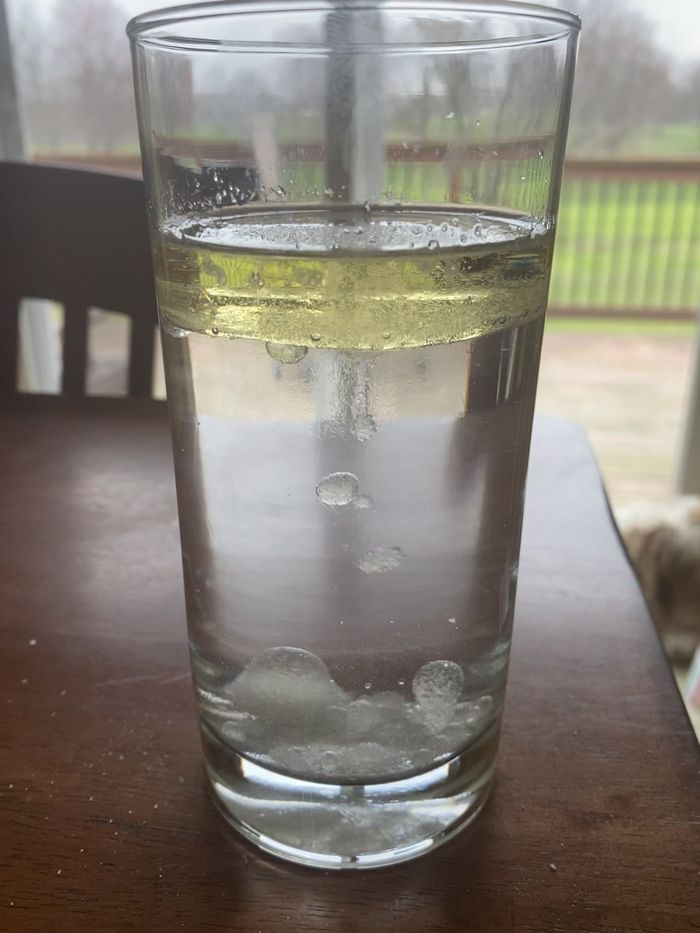Lava Lamp at Home Experiment
Explore density by making a lava lamp look-alike with common household items!
Connect Standard
3.2 PK.A.6 Participate in simple investigations of matter to answer a question or to test a prediction
What You Will Need
- Clear cup or glass
- Food coloring (optional)
- Cooking/vegetable oil
- Table salt
- Water
Instructions
- Fill the glass about two-thirds full with water.
- Add a couple drops of food coloring and stir (the experiment will still work without food coloring, but it looks a lot cooler with the added color!).
- Add oil until it is about one inch thick on top of the water
- Use a salt shaker or grinder to pour salt over the mixture. Start with about 10 shakes, but the more you add the better the experiment will work! Keep adding to continue the movement.
- Observe the movement in the glass after you add the salt!
The Science Behind it
Water is denser, or heavier, than the oil, which is why the water sinks and the oil floats. But notice that the water and oil do not mix. That is because water loves to be neat water and oil loves to be near oil. Water does not like to mix with oil because oil is hydrophobic, meaning that it does not like water, so they stay apart. Salt is a solid so it is the densest (heaviest) out of the three materials. This is why it sinks to the bottom, bringing the oil with it. Once the salt starts to dissolve, oil floats back up to the top, creating your lava lamp in a glass!
Books to Pair with This Experiment
- What Floats in a Moat? by Lynne Berry
- Things That Float and Things That Don't by David A. Adler
- Who Sank the Boat? by Pamela Allen
Experiment Credit
Handout
Download the Lava Lamp in a Glass PDF to print or save.

